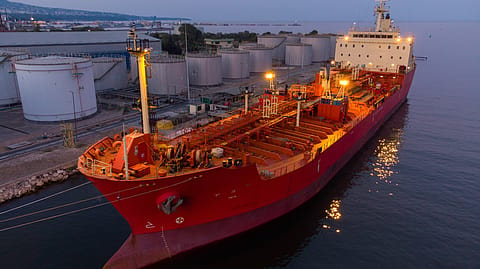India may lose $3.2–6.4 million a day if it stops buying Russian crude
Under the existing policy, Indian OMCs have the freedom to professionally source crude oil in the nation’s best interests, balancing trade benefits and energy security

India stands to lose an economic benefit of about $3.2 million to $6.4 million every day if it stops importing crude oil from Russia, as urged by U.S. President Donald Trump, who recently threatened “heavy sanctions” on countries continuing to buy Russian oil.
Experts in the oil and gas sector told Fortune India that India currently imports 1.6-1.7 million barrels of Russian oil per day, accounting for around 30% of the country’s total crude import value—the highest from any single nation. Due to western sanctions, Indian oil marketing companies (OMCs)—including Indian Oil, Bharat Petroleum Corporation (BPCL), and Hindustan Petroleum (HP)—as well as private refiners like Reliance Industries, have been sourcing crude through Russian intermediaries rather than directly from producers such as Rosneft or Lukoil.
Russia benchmarks its crude against Urals, a blend of heavy, sour oil from the Urals and Volga regions mixed with lighter grades from Western Siberia. The Urals price typically trades at a discount to Brent, the global benchmark for Atlantic basin crude. This discount has been key to India’s cost advantage: Russian barrels have offered savings of $2–4 per barrel recently, down from $10 per barrel when Moscow began deep discounting following western sanctions after the Ukraine war.
Trump claimed this week that India had agreed to “stop” buying Russian oil and would reduce imports to “almost nothing” by the year-end, though the timeline for that move remains uncertain.
The Ministry of External Affairs (MEA), responding to media queries on Thursday, maintained that “safeguarding the interests of the Indian consumer in a volatile energy scenario remains the government’s consistent priority,” without clarifying whether India would halt or continue its Russian purchases.
Under the existing policy, Indian OMCs have the freedom to professionally source crude oil in the nation’s best interests, balancing trade benefits and energy security.
India’s total refining requirement is about 5.4 million barrels per day (bpd). Domestic production—led by ONGC, Oil India, Reliance Industries, and Cairn India—meets only 13–14% of demand, leaving roughly 86% to be met through imports.
Recommended Stories
Before the Russia-Ukraine war in 2022, Russian crude made up less than 1% of India’s import basket. Over the past three years, that share has surged to 30–35%. In value terms, Russia now accounts for 30.01% of India’s crude import bill, followed by the UAE (15.21%), Iraq (13.62%), Saudi Arabia (11.40%), and Qatar (7.12%). The U.S. and other producers in West Asia and Africa collectively account for the remaining 22.63%.
Energy analysts warn that if India stops buying Russian crude and turns back to traditional suppliers such as the UAE, Saudi Arabia, and Iraq, the resulting supply realignment and rising regional demand—amid ongoing sanctions on Russian oil—could push global prices higher. That, in turn, would inflate India’s import bill and erode much of the savings achieved through Russian discounts.
In short, while Washington’s sanctions call poses a geopolitical dilemma, the economic stakes for India are high—potentially costing the country several million dollars a day in lost value and further straining its already import-dependent energy economy.